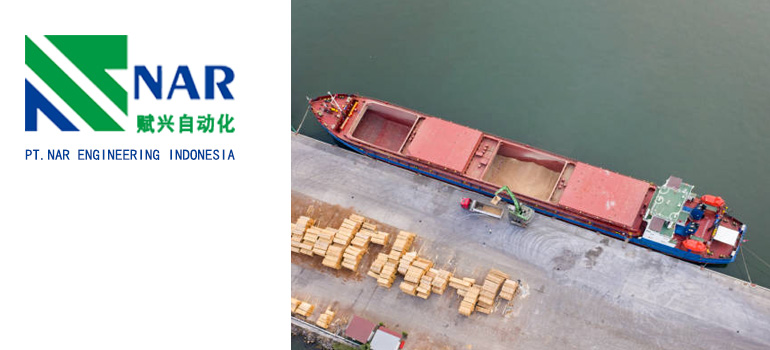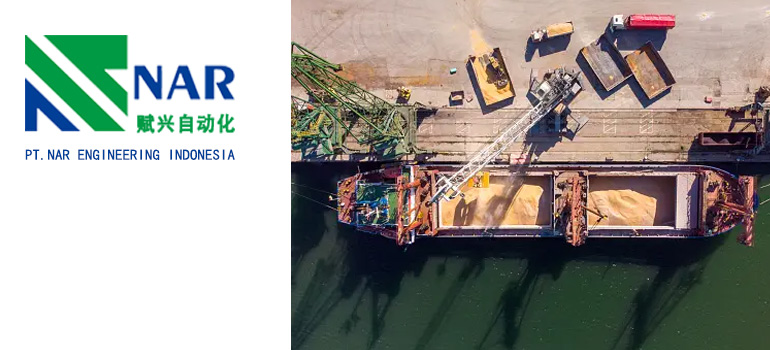Summary:
Best Tips for Ship Cargo Loading Optimization
Planning and Preparation for Efficient Cargo Loading
Operational Best Practices During Cargo Loading
Equipment and Technology for Cargo Loading Optimization
Maximizing Space Utilization and Cargo Security
Planning and Preparation for Efficient Cargo Loading
Planning and preparation are crucial aspects of ensuring efficient cargo loading operations on ships. Let’s delve into the key strategies and considerations for optimizing this process:
Cargo Assessment and Classification:
Cargo Types and Characteristics: Conduct a thorough assessment of the types, characteristics, and properties of the cargo to be loaded, including weight, dimensions, perishability, and hazardous nature.
Segregation Requirements: Classify cargo based on compatibility and segregation requirements, ensuring that incompatible items are not loaded together to prevent safety hazards and damage.
Stowage Planning and Optimization:
Cargo Stowage Plans: Develop comprehensive stowage plans that optimize space utilization while ensuring stability, weight distribution, and compliance with regulatory requirements.
Load Balancing: Distribute cargo evenly across the ship’s holds or compartments to maintain proper trim, draft, and stability, minimizing the risk of list or capsizing.
Utilization of Loading Software: Employ advanced loading software tools to simulate various loading scenarios, assess stability criteria, and generate optimal stowage plans.
Safety and Compliance Considerations:
Regulatory Compliance: Ensure compliance with international regulations and industry standards governing cargo loading operations, including the International Maritime Dangerous Goods (IMDG) Code and SOLAS (Safety of Life at Sea) requirements.
Safety Protocols: Implement stringent safety protocols and procedures to mitigate risks associated with cargo handling, including proper handling of hazardous materials, securing of cargo, and prevention of falls and accidents.
Communication and Coordination:
Stakeholder Coordination: Facilitate clear communication and coordination among shipboard personnel, terminal operators, port authorities, and cargo owners to ensure smooth and efficient loading operations.
Documentation and Paperwork: Ensure accurate documentation of cargo manifests, loading plans, and other relevant paperwork to facilitate efficient clearance procedures and compliance with customs regulations.
Contingency Planning:
Contingency Plans: Develop contingency plans and procedures to address unforeseen circumstances or emergencies during cargo loading, such as adverse weather conditions, equipment failures, or changes in cargo requirements.
Emergency Response Preparedness: Equip the ship’s crew with the necessary training, equipment, and resources to respond effectively to emergencies or incidents that may arise during cargo loading operations.
By meticulously planning and preparing for efficient cargo loading, ship operators can minimize delays, maximize cargo throughput, and ensure the safety and integrity of both the vessel and its cargo throughout the voyage.
Operational Best Practices During Cargo Loading

Operational best practices during cargo loading are essential to ensure efficiency, safety, and compliance with regulatory requirements. Let’s explore some key strategies for optimizing cargo loading operations:
Safety Protocols and Procedures:
Personnel Safety: Prioritize the safety of personnel involved in cargo loading operations by providing adequate training, personal protective equipment (PPE), and adherence to safety protocols.
Cargo Handling Safety: Implement safe cargo handling practices, including proper lifting techniques, securing of cargo, and prevention of slips, trips, and falls.
Real-Time Monitoring and Adjustment:
Continuous Monitoring: Monitor cargo loading progress in real time, using onboard sensors, CCTV cameras, or manual checks to ensure proper execution of loading plans and adherence to safety guidelines.
Dynamic Adjustment: Be prepared to make dynamic adjustments to loading plans based on changing conditions, such as shifting weather patterns, changes in cargo requirements, or unforeseen operational challenges.
Coordination and Communication:
Clear Communication Channels: Maintain clear communication channels among crew members, terminal operators, and port authorities to facilitate efficient coordination and resolution of any issues that arise during cargo loading.
Loading Plan Review Meetings: Conduct pre-loading briefings or meetings to review the loading plan, assign responsibilities, and address any concerns or questions from the team.
Compliance with Regulations:
Regulatory Compliance Checks: Ensure compliance with relevant maritime regulations, industry standards, and port requirements governing cargo loading operations, including weight distribution, cargo securing, and hazardous materials handling.
Documentation and Reporting: Maintain accurate records of cargo manifests, loading plans, and compliance documentation to demonstrate adherence to regulatory requirements and facilitate customs clearance processes.
Emergency Preparedness:
Emergency Response Drills: Conduct regular emergency response drills and training exercises to prepare crew members for potential emergencies or incidents that may occur during cargo loading, such as fires, spills, or medical emergencies.
Emergency Contacts and Procedures: Maintain a list of emergency contacts, including local authorities, port authorities, and emergency response services, and ensure that crew members are familiar with emergency procedures and protocols.
Continuous Improvement:
Post-Loading Evaluation: Conduct post-loading debriefings or evaluations to review the efficiency and effectiveness of cargo loading operations, identify areas for improvement, and implement corrective actions or process enhancements.
Feedback Mechanisms: Encourage feedback from crew members, terminal operators, and other stakeholders involved in cargo loading operations to gather insights and suggestions for optimizing future loading processes.
By implementing these operational best practices, ship operators can enhance the efficiency, safety, and compliance of cargo loading operations, minimizing risks and maximizing the overall effectiveness of the loading process.
Equipment and Technology for Cargo Loading Optimization
Optimizing cargo loading operations requires the right equipment and technology to streamline processes, improve efficiency, and ensure safety. Let’s explore the key equipment and technologies used for cargo loading optimization:
Automated Loading Systems:
Container Handling Equipment: Utilize container cranes, spreaders, and handlers for efficient loading and unloading of containers onto and off ships, reducing manual labor and improving productivity.
Conveyor Systems: Implement conveyor belts or roller conveyors to transport cargo within the port terminal or directly onto the ship, enabling continuous loading operations and minimizing handling time.
Automated Guided Vehicles (AGVs): Deploy AGVs for the autonomous transport of cargo between storage areas, loading bays, and ships, optimizing material flow and reducing reliance on manual labor.
Advanced Cargo Handling Equipment:
Forklifts and Reach Stackers: Use forklifts and reach stackers for lifting, stacking, and transporting cargo within the port terminal or onto the ship, providing versatility and flexibility in handling various types of cargo.
Mobile Harbor Cranes: Employ mobile harbor cranes for lifting heavy and oversized cargo onto ships, offering high lifting capacities and maneuverability to handle diverse cargo requirements.
Side Loaders: Utilize side loaders for loading and unloading containers from the side of the ship, enabling efficient handling of containers in confined spaces or when docked alongside other vessels.
Integration of IoT and Sensor Technologies:
Cargo Tracking Systems: Implement RFID tags, GPS trackers, or barcoding systems to track the location and status of cargo throughout the loading process, providing real-time visibility and transparency.
Smart Sensors: Install sensors on cargo handling equipment and storage facilities to monitor parameters such as temperature, humidity, and weight, ensuring proper handling and storage of sensitive or perishable cargo.
Data Analytics Platforms: Utilize data analytics platforms to analyze operational data, optimize loading processes, and identify opportunities for efficiency improvements and cost savings.
Simulation and Planning Software:
Load Planning Software: Use advanced load planning software to simulate various loading scenarios, optimize cargo stowage plans, and ensure proper weight distribution and stability, reducing the risk of accidents or cargo damage.
Stability Calculators: Employ stability calculation tools to assess the stability of the ship during loading operations, taking into account factors such as cargo weight, distribution, and vessel dynamics to prevent capsizing or list.
Port Simulation Tools: Utilize port simulation software to model and optimize port operations, including vessel traffic management, berth scheduling, and cargo handling processes, improving overall efficiency and throughput.
Safety and Security Systems:
Surveillance Cameras: Install CCTV cameras at key locations within the port terminal and on the ship to monitor cargo loading operations and ensure compliance with safety protocols and security measures.
Access Control Systems: Implement access control systems to restrict access to restricted areas within the port terminal and onboard the ship, preventing unauthorized personnel from interfering with cargo loading activities.
By leveraging these equipment and technologies, port operators and ship owners can optimize cargo loading operations, improve efficiency, enhance safety, and ensure compliance with regulatory requirements, ultimately maximizing the productivity and profitability of their operations.
Maximizing Space Utilization and Cargo Security
Maximizing space utilization and ensuring cargo security are paramount in efficient cargo loading operations. Let’s explore strategies to achieve these objectives:
Optimal Stowage Planning:
Cargo Segregation: Segregate cargo based on type, size, and destination to facilitate efficient loading and unloading operations and prevent damage or contamination.
Utilization of Cubic Space: Maximize vertical space utilization by stacking cargo containers or pallets to their maximum height, utilizing the full cubic capacity of the ship’s holds or deck space.
Dynamic Stowage Optimization: Employ dynamic stowage optimization algorithms to generate optimal loading plans based on cargo characteristics, weight distribution, and stability requirements, ensuring efficient use of available space.
Securing Cargo for Transit:
Cargo Securing Equipment: Install lashing points, tie-downs, and securing mechanisms on the ship’s deck or within cargo holds to prevent shifting or movement of cargo during transit, ensuring stability and safety.
Containerization Techniques: Utilize standardized containers and intermodal equipment to secure and protect cargo during transit, reducing the risk of damage or loss and facilitating efficient handling and transfer between modes of transport.
Use of Dunnage and Chocks: Employ dunnage materials, wooden chocks, or bracing structures to immobilize and stabilize cargo within containers or on pallets, preventing shifting or sliding during rough sea conditions.
Implementation of Cargo Monitoring Systems:
Real-Time Tracking: Implement RFID tags, GPS trackers, or IoT sensors to monitor the location, condition, and status of cargo in real time throughout the loading process, enabling proactive management and intervention in case of deviations or incidents.
Temperature and Humidity Monitoring: Install sensors and monitoring devices to track temperature and humidity levels inside cargo containers or holds, ensuring proper storage conditions for sensitive or perishable cargo.
Tamper-Evident Seals: Use tamper-evident seals and security tags to deter theft, tampering, or unauthorized access to cargo during transit, providing assurance of cargo integrity and security.
Compliance with Security Regulations:
Cargo Security Inspections: Conduct thorough security inspections of cargo, containers, and vehicles entering the port terminal or boarding the ship to detect and prevent the smuggling of contraband, illegal substances, or weapons.
Customs Compliance: Ensure compliance with customs regulations and international trade laws governing cargo security and screening procedures, including the verification of cargo manifests, documentation, and declarations.
Security Training and Awareness: Provide security training and awareness programs for port personnel, ship crew members, and terminal operators to recognize and respond effectively to security threats, suspicious activities, or breaches in cargo security protocols.
Risk Assessment and Contingency Planning:
Risk Analysis: Conduct risk assessments to identify potential threats, vulnerabilities, and risks to cargo security, such as piracy, terrorism, natural disasters, or supply chain disruptions, and develop mitigation strategies and contingency plans accordingly.
Emergency Response Preparedness: Establish emergency response procedures and protocols to address security incidents, accidents, or emergencies involving cargo, including communication protocols, evacuation procedures, and coordination with law enforcement or security agencies.
By implementing these strategies, port operators and shipowners can optimize space utilization, enhance cargo security, and mitigate risks associated with cargo loading operations, ensuring the safe and efficient transport of goods and commodities across maritime supply chains.

